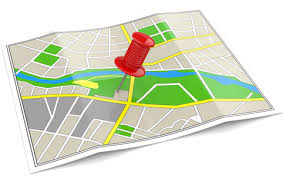 PERS is the most recognized wearable for older adults -- but what's next? Personal Emergency Response Systems (PERS) -- a long-standing $3+ billion market (30+ years!) that has evolved only slightly from its fear-inspiring origins. The 'I’ve Fallen' message is still 'inspiring' families and seniors to acquire one. But 30% of the market’s sales are for mobile devices. This makes sense in this time of substantial life expectancy at age 65, that 46% of women aged 75+ live alone; and now we can add older adults’ newly-discovered extended middle age. Mobility demands mobile devices which in turn boost confidence to be out-and-about. Consider walking the dog -- since one third of the 65+ population has one.
PERS is the most recognized wearable for older adults -- but what's next? Personal Emergency Response Systems (PERS) -- a long-standing $3+ billion market (30+ years!) that has evolved only slightly from its fear-inspiring origins. The 'I’ve Fallen' message is still 'inspiring' families and seniors to acquire one. But 30% of the market’s sales are for mobile devices. This makes sense in this time of substantial life expectancy at age 65, that 46% of women aged 75+ live alone; and now we can add older adults’ newly-discovered extended middle age. Mobility demands mobile devices which in turn boost confidence to be out-and-about. Consider walking the dog -- since one third of the 65+ population has one.
PERS has evolved to look more like wearables – and has increasingly engaged in elder care and health. For example, note gait analysis to help predict decline; the PERS role in predictive analytics, multiple variations in fall detection capability; plus non-motion detection, all found in one product or another in the PERS market. PERS devices can be worn around the neck, on the wrist, and in newer concepts, can enable geo-fencing with smart soles in a shoe – warning a responder if an individual has left a perimeter or has not moved. And wearables can also track individuals with dementia. Other offerings like Anelto use beacons (‘Mom has left the house’). UnaliWear has focused on a voice-interface wearable to appeal to older women. The Limmex offering (outside the US) offers attractive emergency watches in a variety of colors.
Newer wearables will care about all ages, including older adults. Consider the Lively Wearable which combines fitness challenges with the capability to reach a call center if needed. Consider the in-pocket wearable like iTraq or Pocket Finder ("children, pets, seniors, vehicles"). Is this the direction all PERS companies should take? Yes, of course we have a medical alert device for women aged 82 living alone. Yes, we have a fitness tracker for women aged 52 that can be augmented with a link to a response center. Yes, we have a fitness tracker that can note a fall for individuals who are out alone with the dog in winter.
What’s next in wearable tech? Yes, we have a fall detection app for lone workers that may someday soon support fall detection for older adults. Yes, we are a large company whose smart watch may someday support fall detection. Yes, we have a voice-first interface. And when all that has emerged, what is a PERS company anyway? Yes, we know that boomers have all the wealth and that the oldest today is 71. Yes we even have the ability to provide a concierge service for individuals who have our wearable. Call me crazy, but has the future (spelled out on page 21 in 2013) actually arrived?
